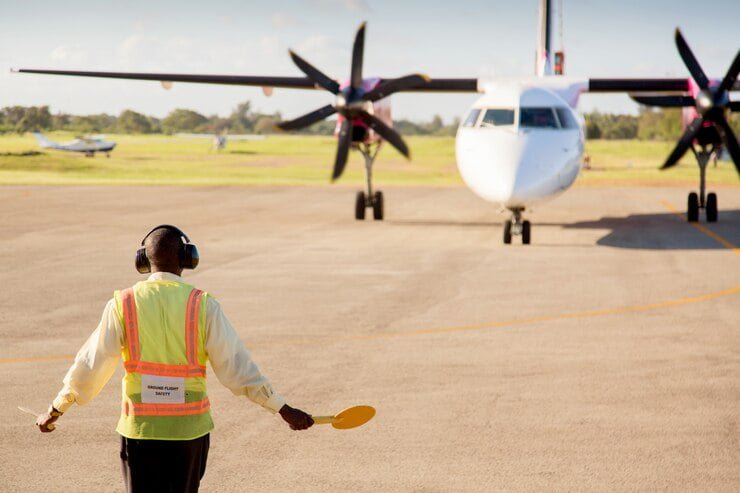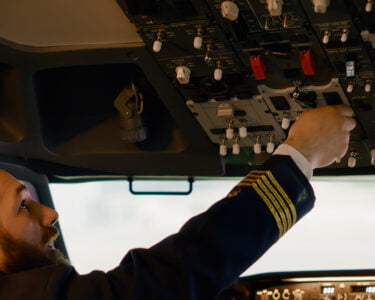The Airbus A300, a pioneering aircraft in the realm of wide-body jets, has long been a cornerstone of commercial aviation. Amidst its technological marvels lies the integration of ARINC systems, a crucial component ensuring the aircraft’s communication, navigation, and surveillance capabilities are at their zenith.
This article embarks on a journey to unravel the significance of ARINC systems within the Airbus A300, exploring its evolution, functionalities, integration challenges, and prospects.
ARINC, short for Aeronautical Radio, Incorporated, stands as a testament to the aviation industry’s commitment to standardized protocols and systems.
Originating as a radio communications provider for commercial airlines in the early 20th century, ARINC has metamorphosed into a global leader in avionics and information technology solutions for the aerospace sector.
Its influence extends far beyond mere communication, encompassing navigation, surveillance, and data link systems crucial for modern aircraft operations.
Within the Airbus A300, ARINC systems form the backbone of its CNS (communication, navigation, and surveillance) suite, facilitating seamless interactions between the aircraft, ground stations, and other airborne entities.
From cockpit communications to satellite navigation and aircraft tracking, ARINC protocols play a pivotal role in ensuring the A300 operates safely, efficiently, and in compliance with global aviation standards.
In the subsequent sections, we delve deeper into the intricacies of ARINC systems within the Airbus A300, examining their applications, integration challenges, advantages, and future trajectories.
Through this exploration, we aim to unveil the indispensable role ARINC plays in shaping the modern aviation landscape and driving the evolution of airborne technologies.
ARINC Systems in the Airbus A300
The Airbus A300, a pioneering aircraft in the world of commercial aviation, incorporates a variety of ARINC (Aeronautical Radio, Incorporated) systems that play crucial roles in its operation. These ARINC systems are essential components that facilitate communication, navigation, and surveillance functions, ensuring the aircraft’s safe and efficient performance throughout its flights.
A. Overview of ARINC Systems:
Communication Systems:
- ARINC systems in the Airbus A300 encompass various communication equipment, including radios, transponders, and data link systems.
- These systems enable the exchange of vital information between the aircraft and ground stations, air traffic control, and other aircraft, ensuring effective communication throughout the flight.
Navigation Systems:
- ARINC navigation systems in the A300 encompass a range of equipment such as GPS receivers, inertial navigation systems (INS), and flight management systems (FMS).
- These systems provide accurate positioning, navigation, and route guidance capabilities, enabling the aircraft to navigate safely along predetermined flight paths.
Surveillance Systems:
- ARINC surveillance systems in the A300 include radar, transponders, and traffic alert and collision avoidance systems (TCAS).
- These systems enhance situational awareness by detecting and monitoring nearby aircraft, helping pilots maintain safe separation and avoid potential conflicts in congested airspace.
Data Link Systems:
- ARINC data link systems in the A300 facilitate the exchange of digital data between the aircraft and ground-based systems or other aircraft.
- These systems support various functions, including the transmission of flight plans, weather updates, and operational messages, enhancing operational efficiency and situational awareness.
B. Role of ARINC in Aircraft Operations:
Seamless Integration:
- ARINC systems in the Airbus A300 are designed to seamlessly integrate with the aircraft’s avionics suite, cockpit displays, and control systems.
- This integration ensures that pilots have access to real-time data and critical information, enabling them to make informed decisions and execute flight operations safely.
Compliance with Standards:
- ARINC systems in the A300 adhere to established industry standards and protocols, ensuring compatibility and interoperability with other aircraft and ground-based systems.
- Compliance with ARINC standards enhances the reliability, performance, and safety of the aircraft’s communication, navigation, and surveillance capabilities.
Continuous Innovation:
- The evolution of ARINC standards and technologies drives ongoing innovation in aircraft systems and avionics.
- Airbus continuously updates and improves ARINC systems in the A300 to incorporate the latest advancements in communication, navigation, and surveillance technology, enhancing the aircraft’s capabilities and performance.
Applications and Functions of ARINC Systems
ARINC systems play a vital role in the functioning of modern aircraft like the Airbus A300. These systems are designed to facilitate communication, navigation, surveillance, and data exchange, ensuring the safe and efficient operation of the aircraft. Let’s delve into the specific applications and functions of ARINC systems within the Airbus A300:
A. Communication Systems:
- ARINC systems in the Airbus A300 enable seamless communication between the aircraft and ground stations, as well as with other aircraft in the vicinity.
- They facilitate voice communication via radio frequencies, allowing pilots to communicate with air traffic controllers and relay important information.
- Additionally, ARINC systems support data communication, enabling the exchange of critical information such as flight plans, weather updates, and maintenance data.
B. Navigation Systems:
- Navigation is a crucial aspect of flight operations, and ARINC systems contribute significantly to navigation capabilities in the Airbus A300.
- These systems utilize various navigation aids, including GPS (Global Positioning System), VOR (VHF Omnidirectional Range), and DME (Distance Measuring Equipment), to determine the aircraft’s position accurately.
- ARINC systems integrate navigation data from multiple sources to provide pilots with real-time navigation information, helping them navigate along predefined flight routes and approaches.
C. Surveillance Systems:
- Surveillance systems enhance the aircraft’s situational awareness by detecting and tracking nearby air traffic and potential obstacles.
- ARINC systems in the Airbus A300 incorporate radar systems, TCAS (Traffic Collision Avoidance System), and ADS-B (Automatic Dependent Surveillance-Broadcast) technology to monitor surrounding airspace.
- These systems provide pilots with traffic alerts and advisories, helping them maintain safe separation from other aircraft and avoid mid-air collisions.
D. Data Link Systems:
- Data link systems enable the exchange of digital data between the aircraft and ground-based systems, air traffic control centers, and other aircraft.
- ARINC systems support various data link protocols, such as ACARS (Aircraft Communications Addressing and Reporting System), CPDLC (Controller-Pilot Data Link Communications), and FANS (Future Air Navigation System).
- These systems facilitate efficient communication of operational data, including flight plans, performance data, and maintenance information, enhancing operational efficiency and decision-making.
Advantages of ARINC Systems in the A300
ARINC (Aeronautical Radio, Incorporated) systems play a crucial role in enhancing the operational capabilities of aircraft like the Airbus A300. Here are several advantages of ARINC systems specifically tailored to the A300:
Enhanced Safety: One of the primary advantages of ARINC systems in the Airbus A300 is the enhancement of overall safety. These systems provide reliable communication, navigation, and surveillance functionalities, ensuring that pilots have access to accurate and timely information during all phases of flight. This helps in reducing the risk of accidents and incidents.
Improved Communication Capabilities: ARINC systems facilitate seamless communication between the aircraft and ground stations, air traffic control, and other aircraft. The A300’s ARINC-equipped communication systems enable pilots to exchange critical information, such as flight plans, weather updates, and operational instructions, efficiently and effectively. This real-time communication capability is essential for maintaining situational awareness and making informed decisions.
Optimized Navigation: ARINC navigation systems in the A300 provide precise positioning information, enabling accurate navigation along planned routes and approaches. These systems utilize advanced technologies such as GPS (Global Positioning System) and INS (Inertial Navigation System) to ensure reliable navigation even in challenging environments or during adverse weather conditions. As a result, the A300 can operate with greater efficiency and reliability, minimizing delays and optimizing flight paths.
Enhanced Situational Awareness: ARINC systems contribute to improved situational awareness for A300 pilots by providing them with comprehensive information about the aircraft’s surroundings, including airspace structure, terrain, weather, and nearby traffic. This enables pilots to anticipate and respond effectively to potential hazards or deviations from the planned flight path, enhancing overall flight safety.
Streamlined Operations: By integrating multiple functions into a single, standardized system, ARINC systems help streamline aircraft operations and reduce cockpit workload. The A300’s ARINC-equipped avionics simplify the management of communication, navigation, and surveillance tasks, allowing pilots to focus on flying the aircraft safely and efficiently. This operational efficiency translates into cost savings for airlines and improved passenger experiences.
Conclusion
In conclusion, the integration of ARINC systems in the Airbus A300 represents a significant advancement in aviation technology, offering a myriad of benefits that enhance safety, efficiency, and operational capabilities.
Through standardized communication, navigation, and surveillance protocols, ARINC systems enable seamless interaction between the aircraft, air traffic control, and other elements of the aviation infrastructure.
This fosters improved situational awareness for pilots, leading to better decision-making and ultimately contributing to the overall safety of flight operations.
Furthermore, the streamlined operations facilitated by ARINC systems result in cost savings for airlines and a more enjoyable travel experience for passengers.
By optimizing communication, navigation, and surveillance functions, the Airbus A300 equipped with ARINC systems demonstrates the importance of leveraging advanced technologies to meet the evolving demands of modern aviation.
As we look to the future, continued advancements in ARINC standards and technologies hold the promise of further enhancing the capabilities of aircraft and ensuring the continued safety and efficiency of air travel worldwide.





